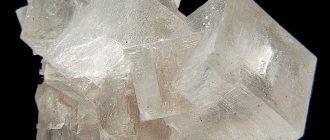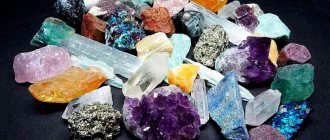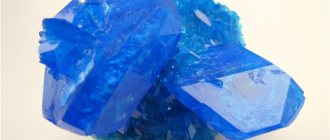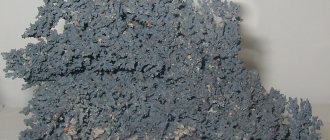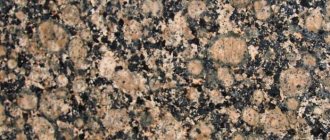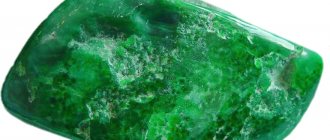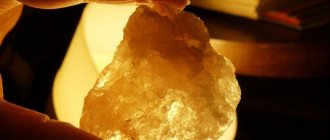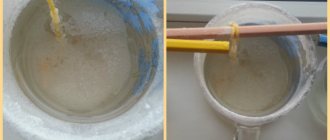Rock salt is a sedimentary mineral consisting of sodium chloride and impurities.
The rock has another name - halite, which in everyday life is known as table salt. In the conditions of the deposit, it consists of stones, which, after processing and cleaning, acquire the usual appearance of white powder. The rock is of ancient origin. The ancient Greeks associated its properties with the salty taste of sea water.
Main characteristics
The chemical formula of table salt is NaCl, the compound contains 61% chlorine and 39% sodium.
In its pure form, the substance is very rarely found in natural conditions. In its purified form, rock salt can be clear, opaque, or white with a glassy sheen. Depending on the additional impurities included in the composition, the compound can be colored:
- red or yellow if iron is present;
- brown or black if the composition contains residues of organic compounds;
- gray - admixture of clay;
- lilac and bluish - salvina.
Rock salt is quite fragile, absorbs moisture well and has a salty taste. The mineral dissolves quickly in water. The melting point is 800 degrees. During combustion, the flame acquires an orange-yellow hue.
Rock salt appears as a cubic crystal or stalactite with a coarse grain structure.
How salt is mined. Salt mine
≡ 15 February 2014 · Category: Technologies, This is interesting
Salt has been a constant companion of man since ancient times. This mineral, familiar to us now, in certain historical periods was valued on an equal basis with gold, and its possession brought wealth and power. And all because until certain times, salt extraction was a manual and labor-intensive process. In the modern world, salt extraction has long been mechanized, carried out on a huge scale and costs pennies. In Ukraine, the main salt mining enterprise is the Artyomsol State Enterprise, which has extensive production facilities in the city of Soledar, Donetsk region. In addition to the existing production, there is also a small and at the same time unique site available to tourists. We'll take a look there today.
Brief historical background
In 1880, a large underground salt deposit was discovered in the Donbass near the village of Bryantsevka. The very next year the first mine was put into operation and industrial production of rock salt began. This event actually marked the beginning of the Artyomsol enterprise and the development of the present Soledar. The company received its modern name in honor of F.A. Artyom. Nowadays, the Artyomsol State Enterprise is the largest enterprise for the extraction and sale of table salt in Central and Eastern Europe: products are supplied to 22 countries of the world. The enterprise is capable of producing more than 7 million tons of salt per year. In Soviet times, Artyomsol produced up to 40% of the all-Union production of rock salt. The extraction of salt from the Artyomovskoye deposit takes place at a depth of 200-300 m. Over more than a hundred years, a system of workings with a length of about 300 km was formed, more than 250 million tons of salt were extracted, and the volume of voids exceeded 110 million cubic meters. meters. Despite the large volume of mining, only 3% of the salt available in the deposit is currently developed. So Soledar’s salt reserves will last for a long time. In one of the exhausted workings there is an underground department of the speleosanatorium “Salt Symphony”, which provides treatment for respiratory diseases. Up to 100 people can recover here at the same time. Tourist excursions are also held here and there is even an underground museum of the salt industry. The tourist area takes a couple of kilometers at most.
1. Upon arrival at our destination, we are greeted by one of the many mine headframes that are scattered throughout the Donbass, and the inscription “GP Artemsol” above the entrance.
Unfortunately, despite all the uniqueness and industrial attractiveness of this tourist site, getting into it on your own is not as easy as we would like. Although all phone numbers, passwords and appearances have long been published on the Internet. Firstly, to sign up for an excursion you need to complete a whole quest. Priority is given to large groups. If you want to go alone, you can only find out about availability the day before, because... you will have to join someone else's group. Inconvenient. But even when recording with a large group at once, there are many problems. You need to register in advance, because... On weekends everything is usually booked out a month or two in advance. In this case, you also need to make an advance payment in full in advance. Secondly, the infrastructure around Soledar is poorly developed. Public transport, for example, runs relatively rarely from Donetsk, and travel takes a long time. In general, it is immediately clear that excursions here are a kind of side activity, which is maintained in the minimum possible condition, but is not actively developed. On the other hand, due to the fact that the site is poorly developed in terms of tourism and is not as promoted and polished as the same Polish Wieliczka, here you can see authentic salt workings, untouched by marketing and the tourism business.
2. From the very first steps you can feel that this is still a functioning enterprise, and not a developed tourist attraction
